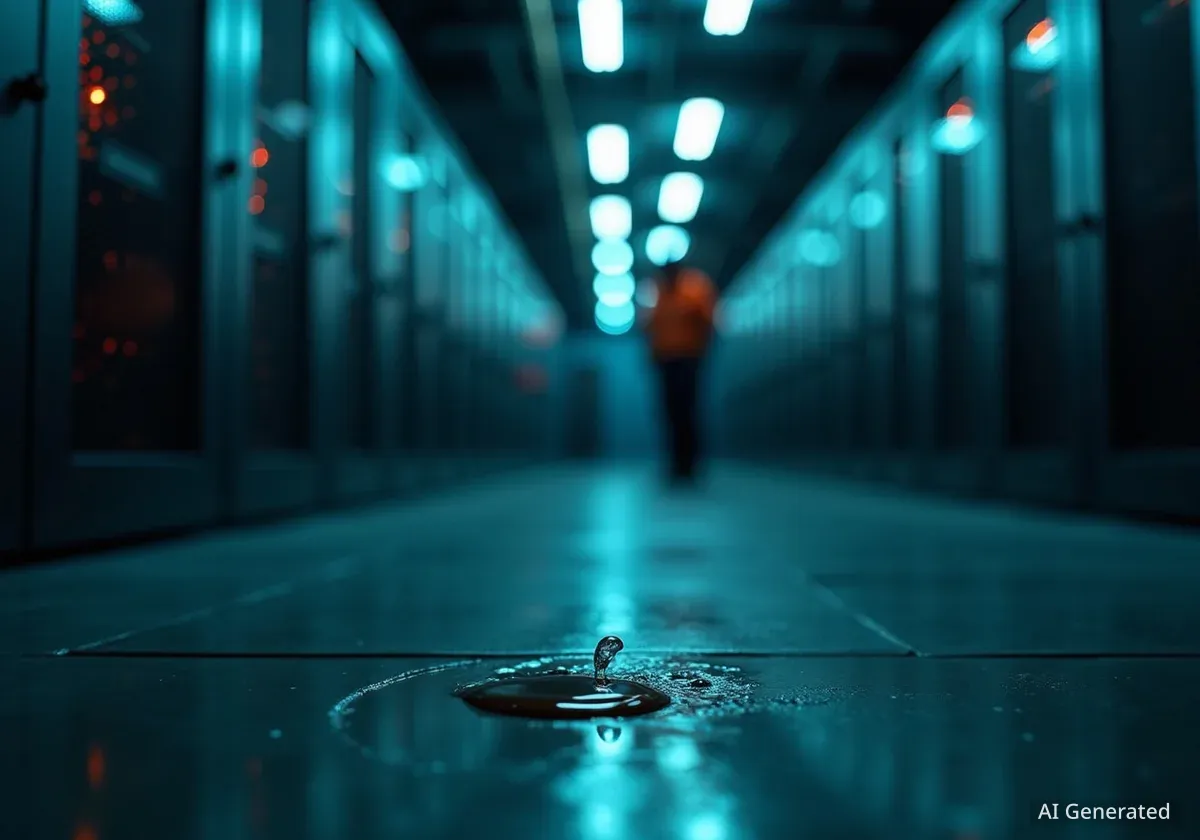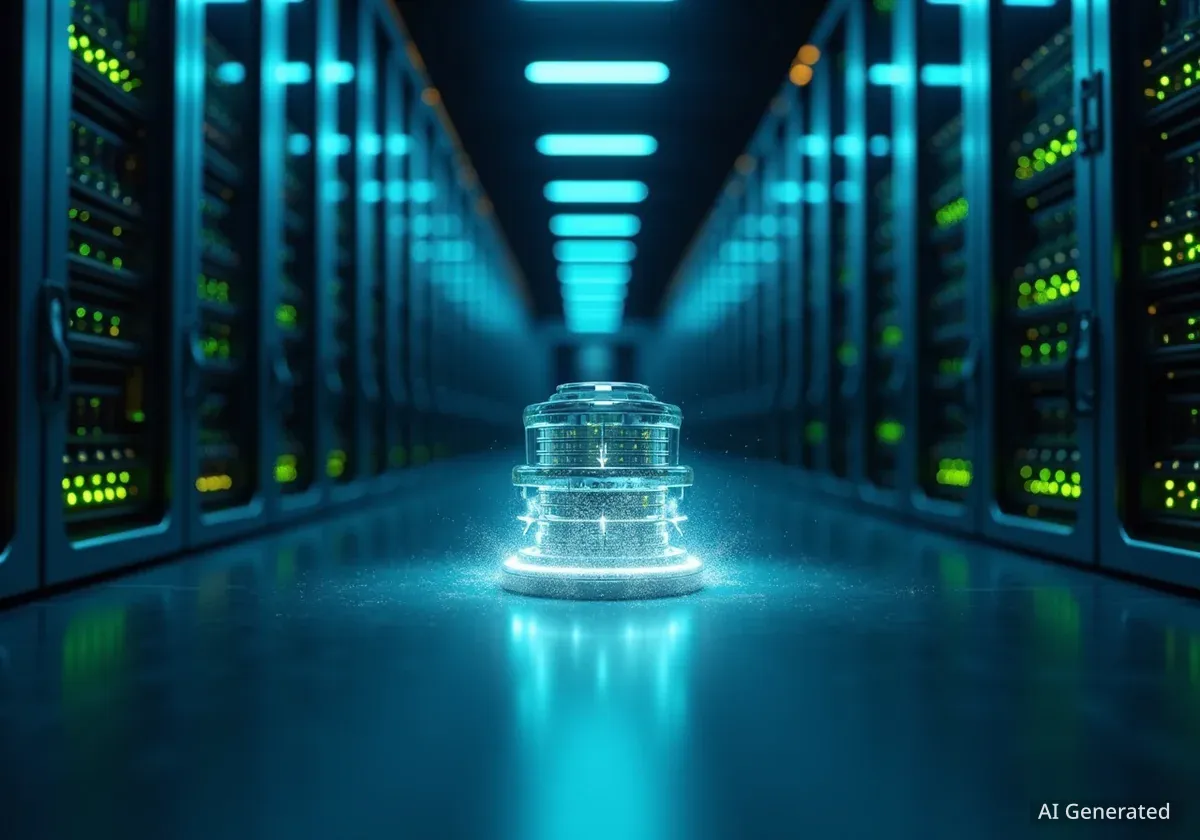Across the United States, households are facing higher electricity bills, a trend driven by both aging infrastructure and a new, significant factor: the rapid growth of artificial intelligence. According to the U.S. Energy Information Administration, the average price of electricity has increased by 13% since 2022, with the surge in energy demand from AI data centers emerging as a key contributor to rising consumer costs.
Key Takeaways
- The average U.S. electricity price has risen 13% since 2022, outpacing general inflation.
- The AI industry is causing the largest surge in electricity demand in two decades, primarily through power-intensive data centers.
- Data centers are projected to consume up to 12% of all U.S. electricity by 2028, up from 4.4% in 2023.
- Tech giants are investing tens of billions quarterly in data center infrastructure to support AI development.
Understanding the Spike in Household Energy Costs
Many Americans are noticing a significant increase in their monthly power bills. For example, Kentucky resident Lindsey Martin reported her bill jumped from around $150 a few years ago to $372 in August. This experience reflects a nationwide trend. Data from the U.S. Energy Information Administration (EIA) confirms that residential electricity costs are climbing steadily.
The national average price has climbed 13% since 2022. The EIA anticipates that retail electricity costs will continue to grow faster than the rate of inflation. Certain regions, including the Pacific, Middle Atlantic, and New England areas, are expected to experience even sharper price hikes than the national average.
Traditional and New Cost Drivers
For years, rising electricity costs were primarily attributed to the need to update and maintain the national power grid. This infrastructure requires significant investment to withstand severe weather events and ensure reliability. However, a new and powerful driver has emerged: the boom in artificial intelligence.
The AI Industry's Massive Energy Appetite
The development and operation of AI technologies are incredibly energy-intensive. This demand comes from data centers, the physical backbone of the digital world, which are now being built and upgraded at an unprecedented rate to handle complex AI computations.
Rich Powell, CEO of the Clean Energy Buyers Association, noted that this growth is contributing to more electricity demand than the United States has seen in two decades. This requires massive new investment in both electricity generation and transmission infrastructure.
Data Center Energy Consumption Projections
A December 2024 report from the Department of Energy projects that data centers will consume between 6.7% and 12% of total U.S. electricity by 2028. This is a substantial increase from the 4.4% they consumed in 2023.
Unprecedented Investment from Tech Giants
Major technology companies are investing billions to secure their positions in the AI race. These capital expenditures are largely focused on building and equipping data centers. For instance, in a single quarter, Microsoft reported spending $24.2 billion on infrastructure, while Meta spent $17 billion.
This construction boom is visible in market data. According to a Bank of America Institute report, spending on data center construction reached a high of $40 billion in June. This rapid expansion is straining local and national power grids.
"AI is really computationally intensive," said Shaolei Ren, an associate professor of electrical and computer engineering at the University of California, Riverside, explaining the immense power required for modern AI tasks.
How Data Center Demand Affects Consumer Bills
Electricity pricing is complex, but it generally covers the costs of generating power, transmitting it across high-voltage lines, and distributing it to homes and businesses. While large industrial users like data centers often receive lower rates, their massive and concentrated demand can strain the grid and drive up overall costs for everyone.
According to Bob Johnson, an analyst with Gartner, the existing power industry is not adequately equipped to handle this sudden explosion in demand. He explained that pricing models in many regions have not been updated to account for the unique burden data centers place on the system.
The Pricing Structure Problem
In many areas, the cost of grid upgrades needed to support new data centers is socialized, meaning it is spread across all customers in a service area. "In other words, the homeowners shouldn’t have to pay for data centers, but that’s not built into the pricing structure," Johnson stated.
A Direct Link to Local Price Hikes
The impact is not just theoretical. A Bloomberg News analysis found a direct correlation between the proximity of data centers and higher electricity costs. In some areas near these facilities, residents saw their electricity costs increase by as much as 267% compared to five years prior.
Some states are beginning to address this issue. Oregon, for example, passed legislation requiring data centers to pay for the actual strain they place on the state's electrical grid. This policy aims to prevent the associated infrastructure costs from being passed on to residential consumers.
The Future of Energy and AI
As AI tools become more sophisticated, their energy requirements are set to grow. Modern AI can now generate realistic video and write complex code, tasks that require significantly more computational power than simple text queries. The partnership between OpenAI and Broadcom to develop 10 gigawatts of custom AI systems—enough to power a major city—highlights the scale of future energy needs.
This trend places immense pressure on the energy sector to expand capacity quickly. Ram Rajagopal, a senior fellow at Stanford University’s Precourt Institute for Energy, described the current situation as an "explosion in demand" from the AI industry. Meeting this demand while managing costs for consumers will be a central challenge for policymakers and utility companies in the years ahead.





